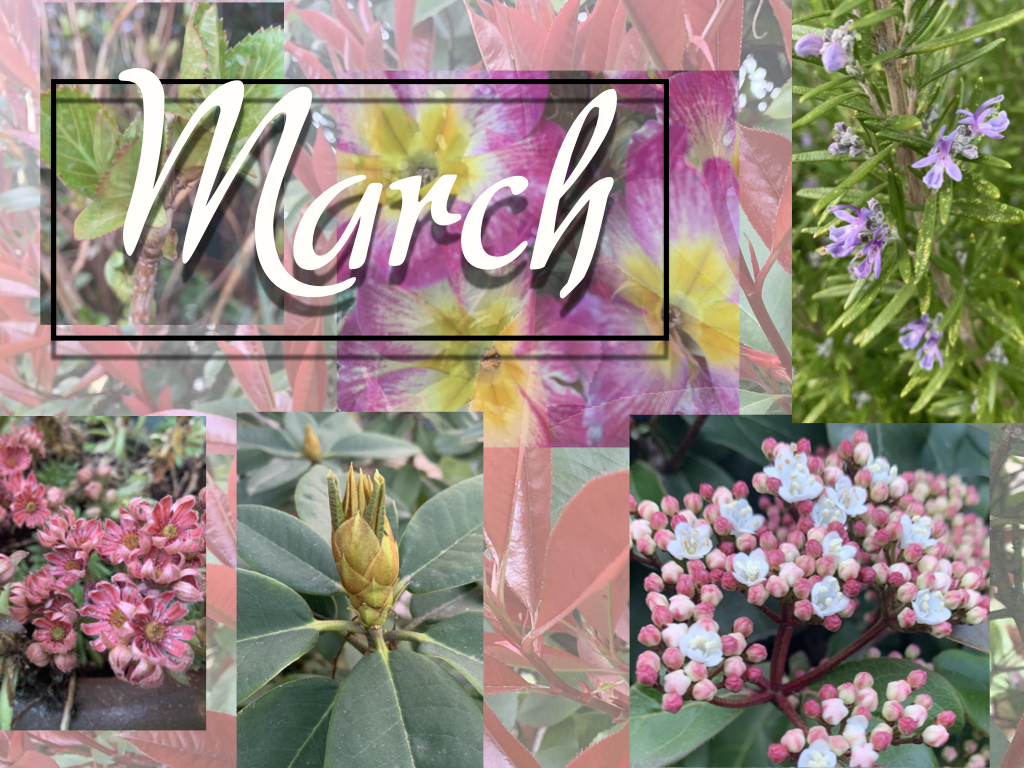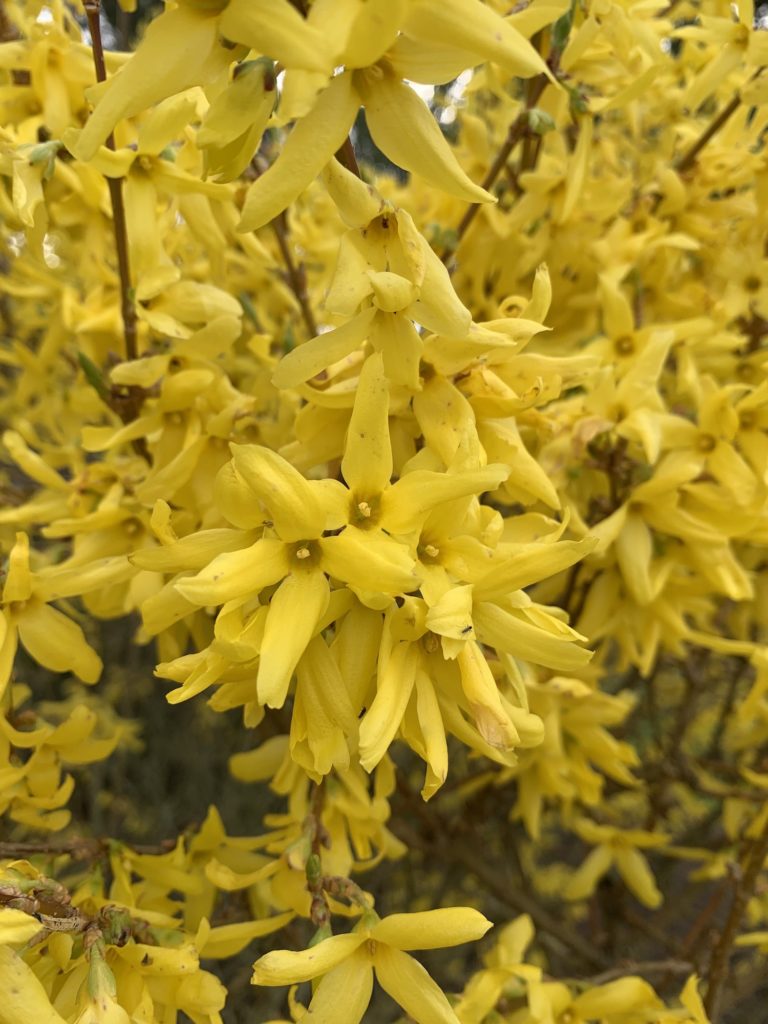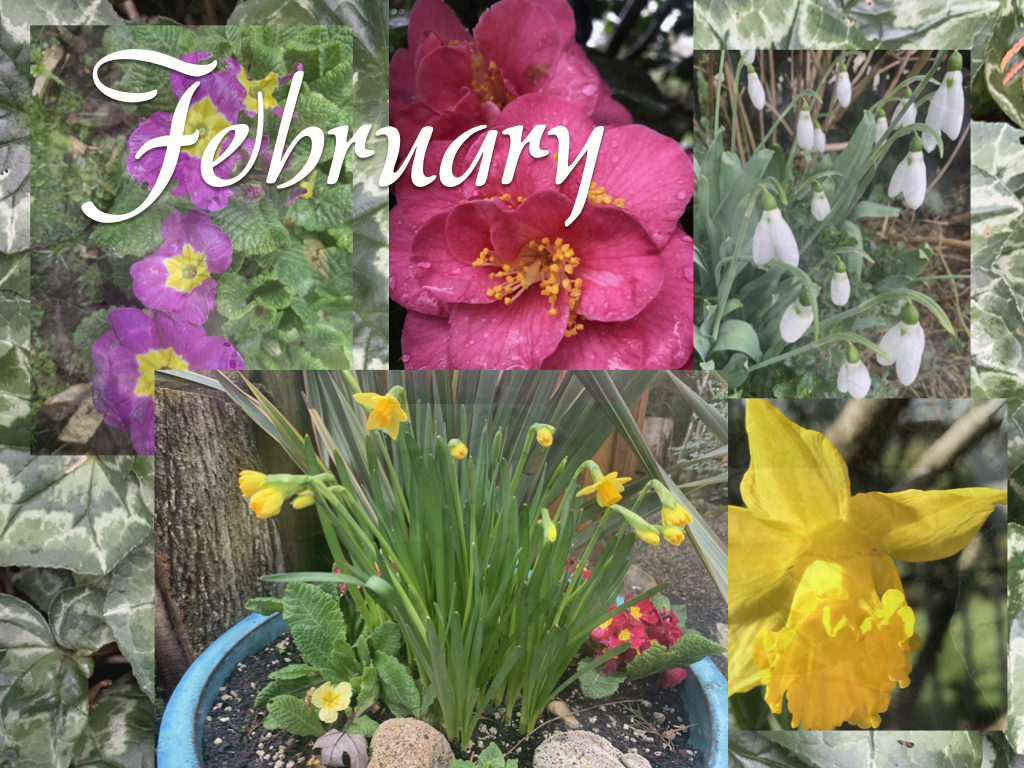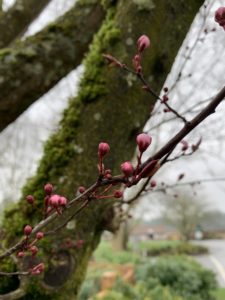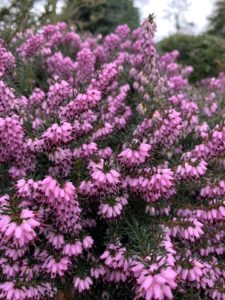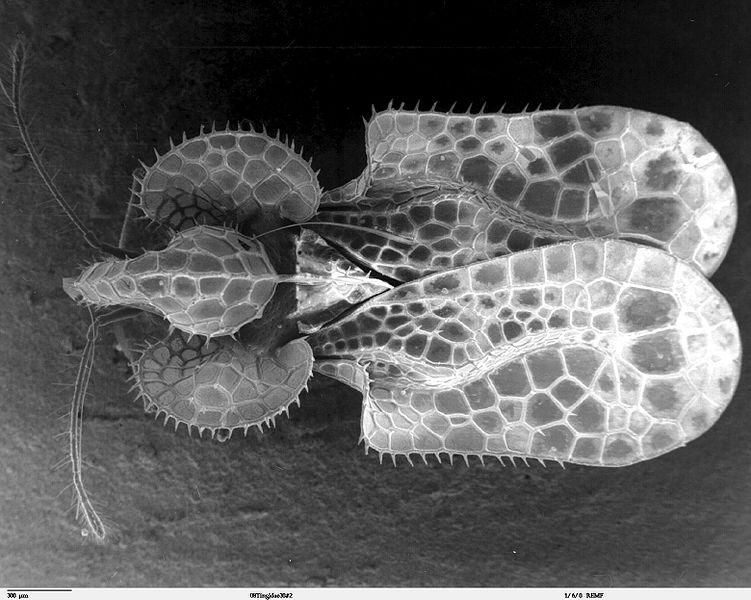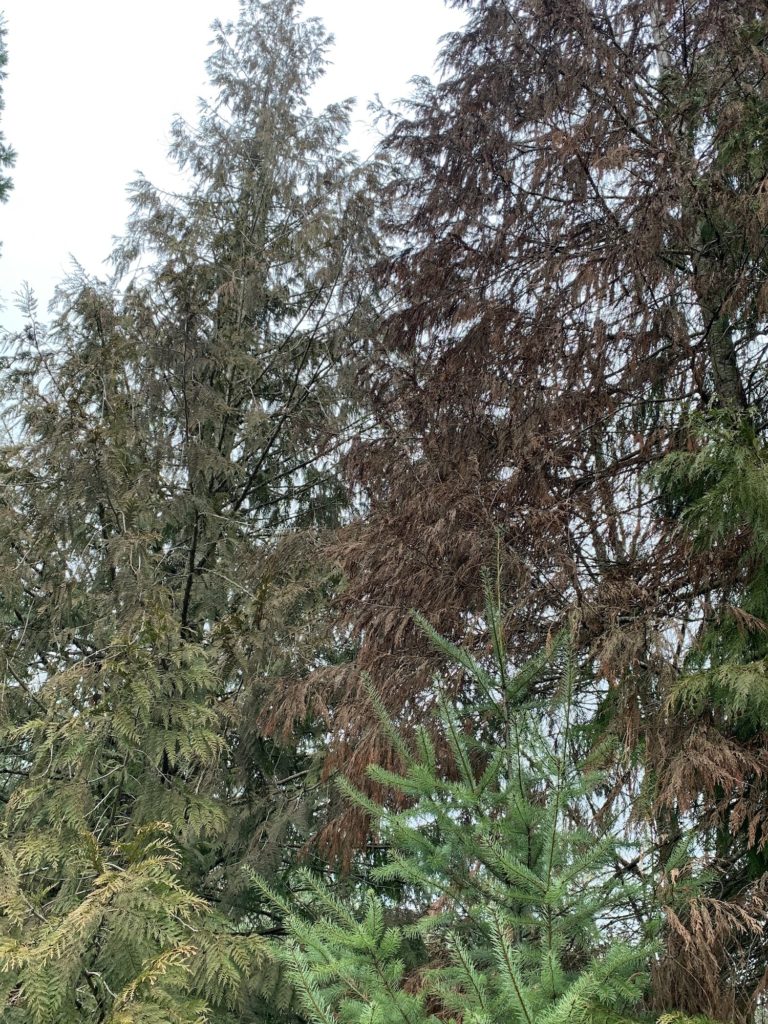GNTS, Inc. is sporting a new look these days. We are completing a long and expensive restoration of our 1952 GMC chip truck, which we purchased in 1996 and which is iconic and “legendary” in our home town. No other tree service in our region, probably in the entire country, has a tree service dump truck like this one—and there’s more to come with new signs and new wood on our dump body to give the truck a more classic and vintage look. This is all in keeping with one of our mottos which is “Old fashioned service, modern techniques since 1985.” For sure, our old dump truck drives home the point of “old fashioned.” Our truck is unique and so is our company in many ways, but this is a discussion for another time.
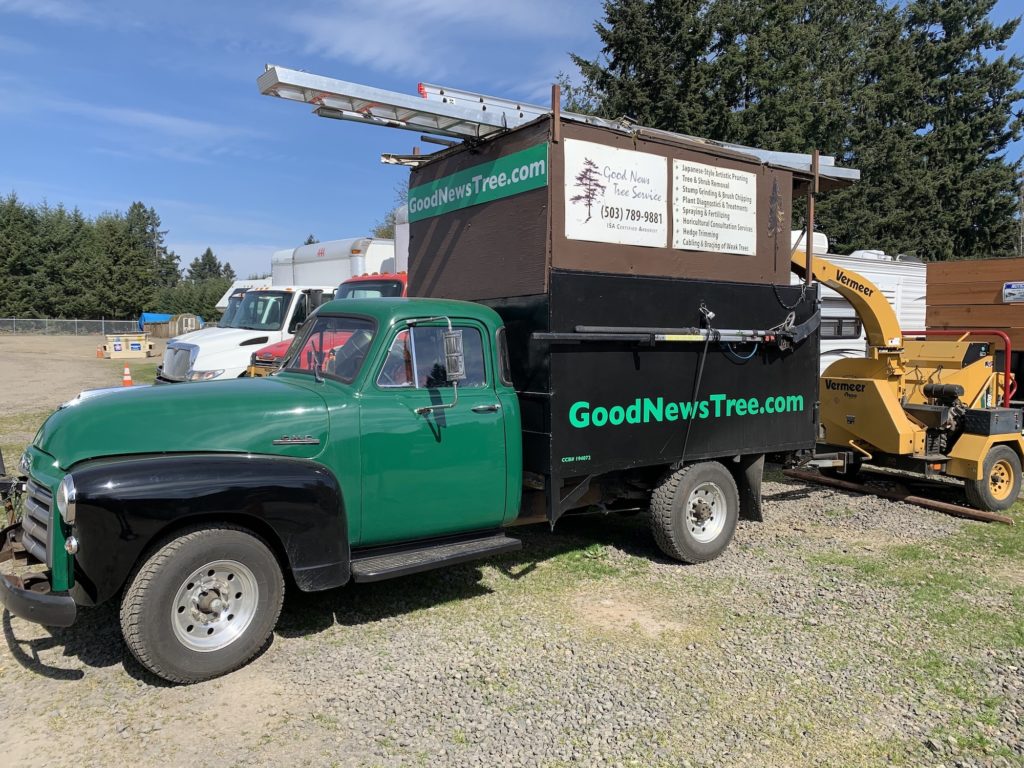
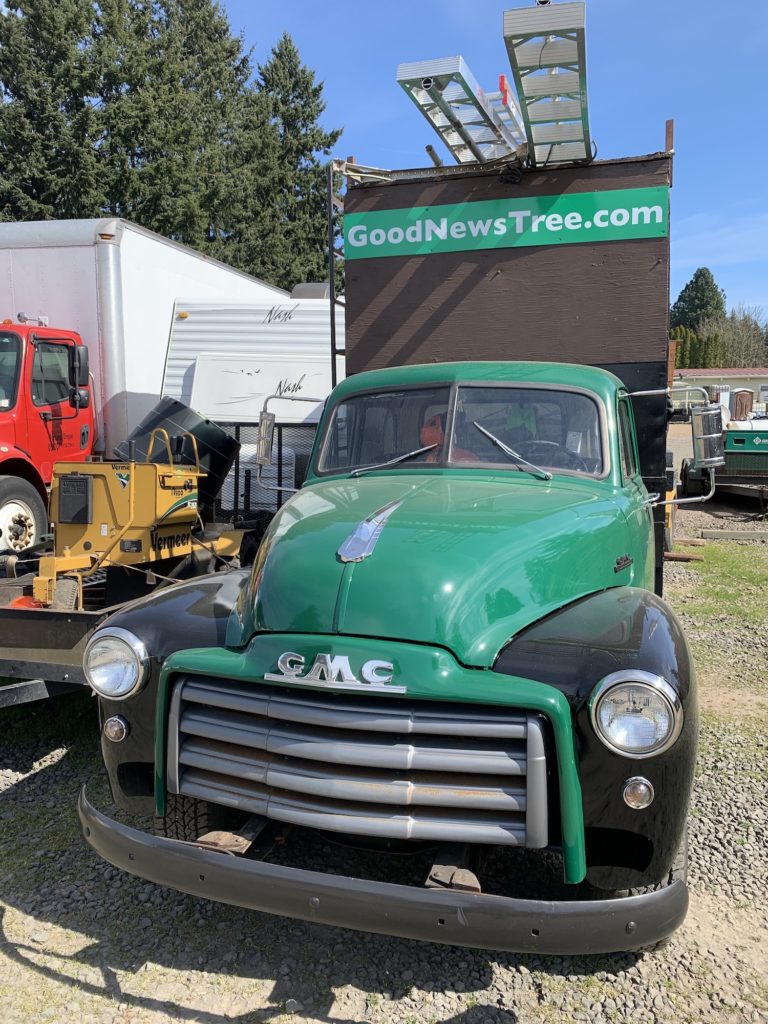
So why the name “Good News Tree Service, Inc.?” This is not your typical name for a tree service. I could have named my company after myself like so many others do, or added any one of a number trite verbiage to my name such as “A Cut Above,” “Out on a Limb,” “Best,” “Top Notch,” “Cheap,” “Inexpensive,” Professional,” “Quality” or whatever. While these may all be okay names, we chose something totally different and unique because we’re a little different than all the others. So why?
Simply this for this reason. It is our hope that people will ask us “what is the good news?” So what is the good news you may ask? I’m glad you asked! Well there are a lot of things that qualify as good news, even in these crazy times in which we’re living; however, above everything else, there is one thing that stands out above all the rest, and that is the good news of the gospel of Jesus Christ (Yeshua the Messiah), and the love, peace, joy and hope that embracing and walking out this truth brings. Even though I’ve been in biblical-based evangelistic and pastoral ministry for 30 years, I don’t promote a church, denomination or any religious institution. I promote one thing only: the Bible as the word of LORD God (Yehovah Elohim) and Jesus Christ (Yeshua the Messiah) as the One who loved us so much that he died to pay the price for our sins, and Who then promises to give us changed and spiritually regenerated life full of love, peace, joy and hope if we will come into a personal relationship with Him.
So do you want to go to the next step in your upward spiritual journey and find out why you were placed on this earth and what your potential spiritual destiny is? Well, be courageous and please take a look at what I’ve written below.
Why were you born? Is life just a giant treadmill—you’re born, live and die?
The Bible, God’s message to man, begins with the words, “In the beginning, God/Elohim created the heavens and the earth.” The Bible tells us that God (His biblical name is Yehovah Elohim) is the Supreme King of the universe (Pss 47:7; 95:3) who created everything including man (Neh 9:6; Gen 2:7). Man is the only creature Elohim created in His own likeness (Gen 1:26). Why? Elohim, is a loving Father (Matt 5:48; 6:9; Rom 1:7), and it was His plan for man to live forever as part of His spiritual family (Rom 8:14–16; 1 John 3:1–2). For this to happen, man had to love and obey Elohim, like a child needs to obey his parents. For awhile, the first man and woman obeyed and loved Elohim (Gen 1:27–28; 2:4–25).
Sadly, everything soon changed. An evil alien king and a rival to Elohim appeared on the earth and seduced the mind and heart of man (Gen 3:1–6). This evil king, who the Bible calls the serpent, the devil or Satan (Gen 3:1; Rev 12:9; 20:2), accused Elohim of lying to man and he lured man into sin (breaking Elohim’s laws, 1 John 3:4). When man sinned, he came under Satan’s power and became a slave to sin and rebellion against Elohim. When man chose to follow the devil, he chose a spiritual path that leads away from Elohim resulting in guilt, hopelessness, emptiness, pain, bondage and eventually eternal death. All men have been going down this path of sin and rebellion ever since (Rom 3:23).
As King of the universe, Yehovah Elohim is a God of law, order and justice (Deut 32:4,35; Pss 9:4,7,8; 89:1). As in a nation, there has to be law and order in the universe or else there would be chaos and anarchy. If evil were allowed to go unchecked, then all that Elohim has made and loves would be destroyed. As in human government, so it is with Elohim’s government: when laws are broken a penalty has to be paid. When man breaks Elohim’s laws the penalty is misery, guilt and death (Gen 2:17; Ezek 18:4; Rom 6:23).
In the mean time, the devil, the enemy king, has blinded his prisoners (man) to the terrible consequences of sin, to the truth of Elohim’s laws or Torah and to Elohim’s love. The devil promises man so much, but delivers so little in return. If man will sin, he promises man wealth, fame, pleasure, power, prestige, and acceptance (Matt 4:8–9), but instead man ends up with guilt, despair, emptiness, sorrow, pain, and eventually death and an eternity of separation from Elohim. The devil is a deceiver and a liar and the father of all lies (John 8:44).
All men have sinned (broken Elohim’s Torah-laws) and fallen short of the glory YHVH intended for him when He made man in His image (Rom 3:23). Anyone who says he has not sinned is deceiving himself (1 John 1:8). The Ten Commandments (Exod 20:1–17) give us an outline of what sin is. For example, if you put anything in your life ahead of Elohim, then you are guilty of idolatry. If you have profaned Yehovah’s name, then you are a blasphemer. If you have not rested on the seventh-day Sabbath, not honored your parents, murdered, stolen, committed adultery, lied or coveted, you are a lawbreaker and a sinner worthy of death, according to the Word of Elohim (Rom 6:23).
Man has a big problem! How can he obtain the glorious destiny that Elohim has for him as a son who will live forever (Rom 3:23; Eph 1:3–4) when he is a sinner under an irrevocable death penalty (Rom 6:23; Ezek 18:4)? The enemy king, Satan the devil, figures that he has man trapped like a prisoner of war behind the walls of a heavily guarded fortress prison with no possibility of escape.
But Elohim had a plan from the beginning to rescue man. He knew man would sin, but when the time was right, He “broke” a piece of Himself off, so to speak, and sent Himself to this earth and put a part of Himself inside of a human body (Isa 53:1 and 2–12 for context; Rom 8:3). We know that Divine God-Man to be Yeshua the Messiah or Jesus Christ (John 1:1–14; Phil 2:6–8). He would save or rescue man from the death penalty (Matt 1:21). The Bible says, “For Elohim so loved the world that He gave His only begotten Son, that whosoever believes in Him [Yeshua] should not perish, but have everlasting life” (John 3:16).
How did Yeshua save sinful man? The Bible says that Yeshua lived a sinless life and then died to pay the price for man’s sin (2 Cor 5:21; 1 Pet 1:18–19; 2:22). As Yehovah in flesh form (Matt 1:23; John 1:1–14), and as the Creator of man (John 1:3; Eph 3:9; Col 1:16), Yeshua’s life was worth more than all sinful men put together (Heb 9:28). By dying in man’s place (1 Pet 2:24; Isa 53:4–6), he satisfied Elohim’s divine justice (1 Pet 3:18). Is this hard to believe? Well believe it! This is how much Elohim loved you, a sinner (Rom 5:8). He sent his own Son to die on the cross to pay for your sins!
So now what do you need to do? How do you get set free from the prison of the enemy king, and be released from the grip of guilt, emptiness, anguish, pain and eventual eternal death and separation from Elohim and his love?
What must you do to be saved? It is as simple as ABC.
- Admit that you’re a sinner and turn away from all sin.
- Believe in your heart that Yeshua died for your sins and resurrected from the dead defeating the power of death.
- Confess with your mouth and believe in your heart that He is the Son of Elohim.
- Then ask Him to fill you with His Holy Spirit.
- Be baptized in water for the washing away of your sins and begin reading and believing your Bible every day.
- Then become a part of a congregation of serious Bible-believing followers of Yeshua. After this, resolve to obey Yeshua, your new Master and King every day. Show Elohim that you love Him by reading His Word, the Bible, and following His commands.
- Do this and your life will be changed forever!
For more information, we invite you to check out our website at www.hoshanarabbah.org



